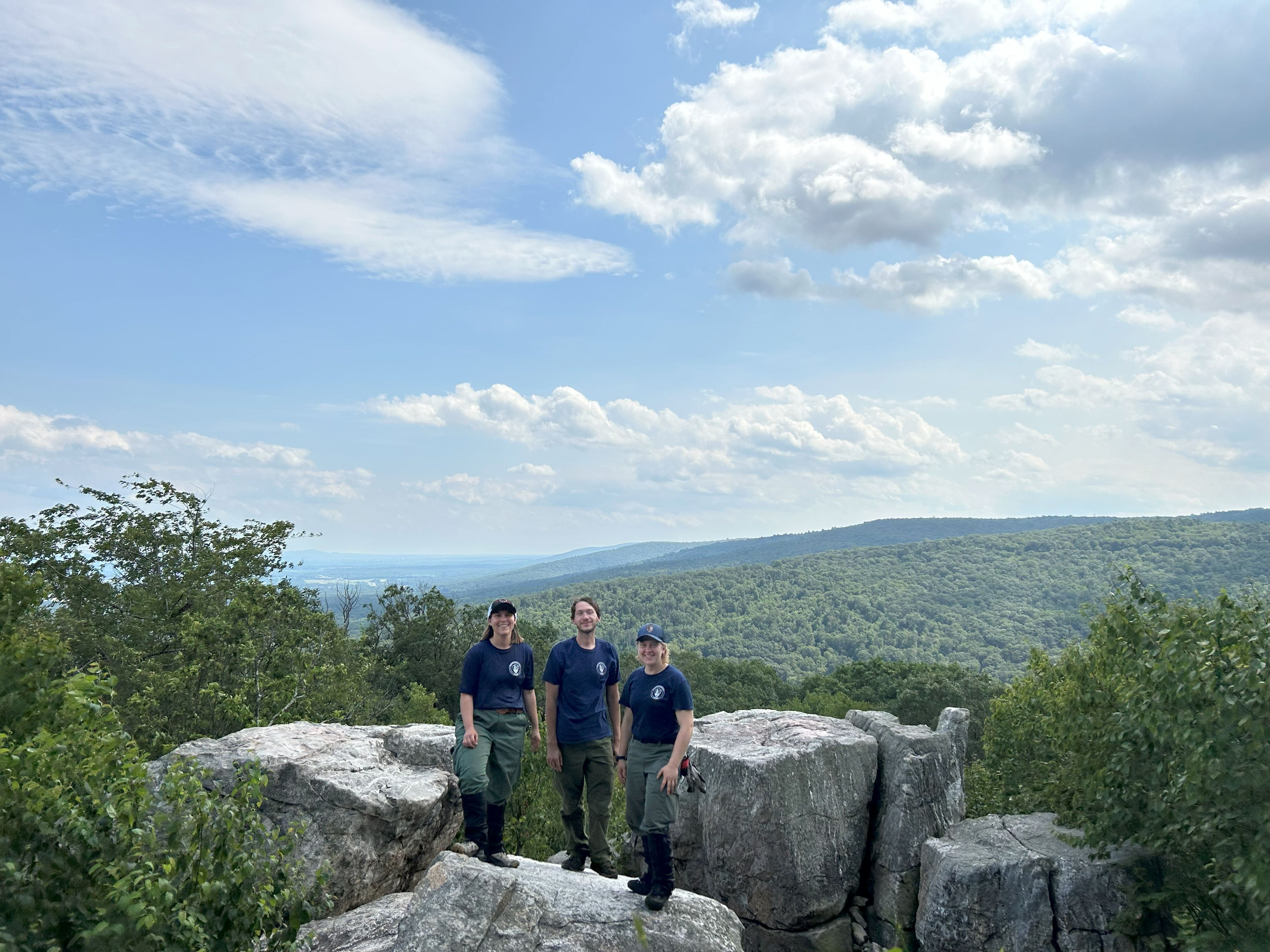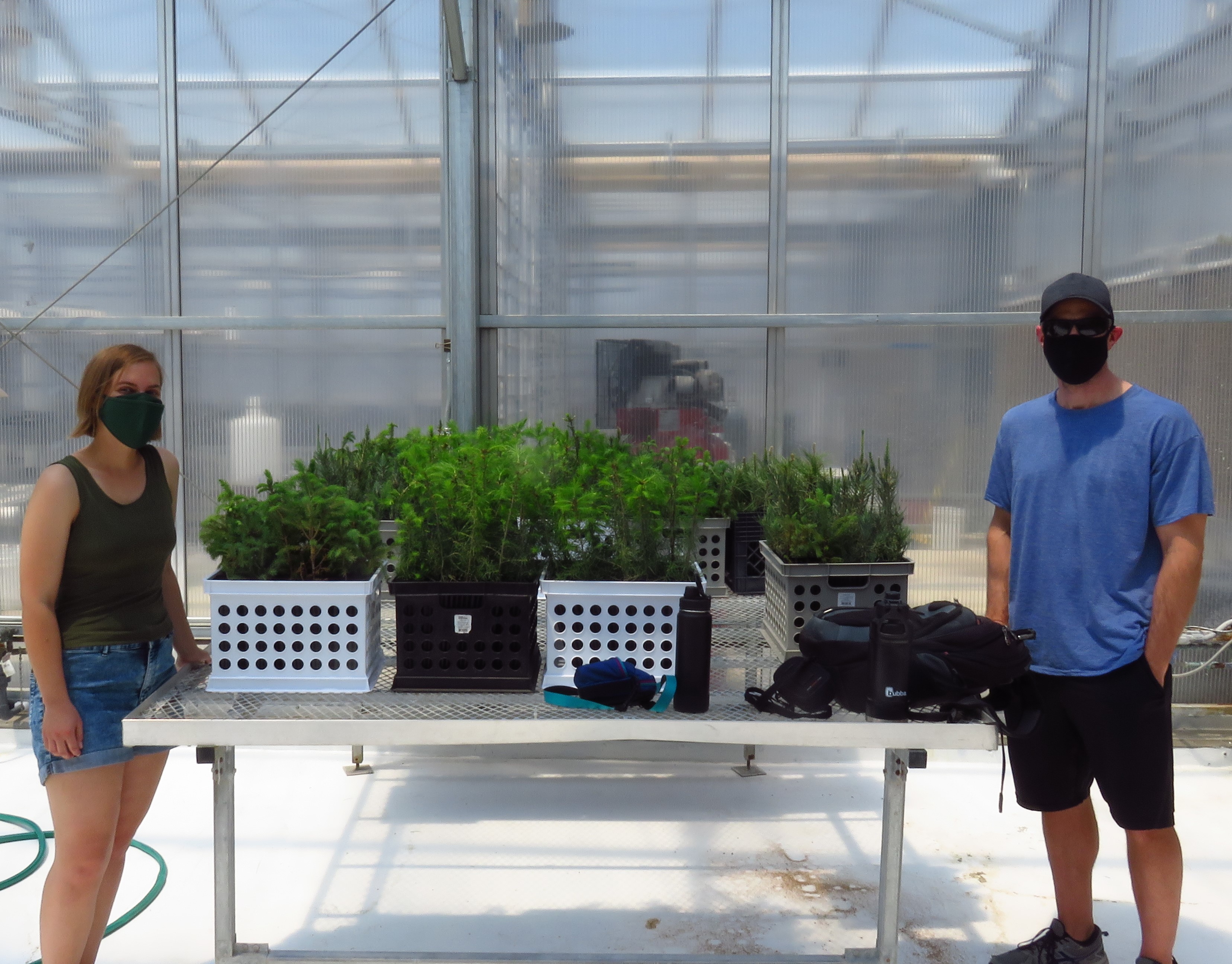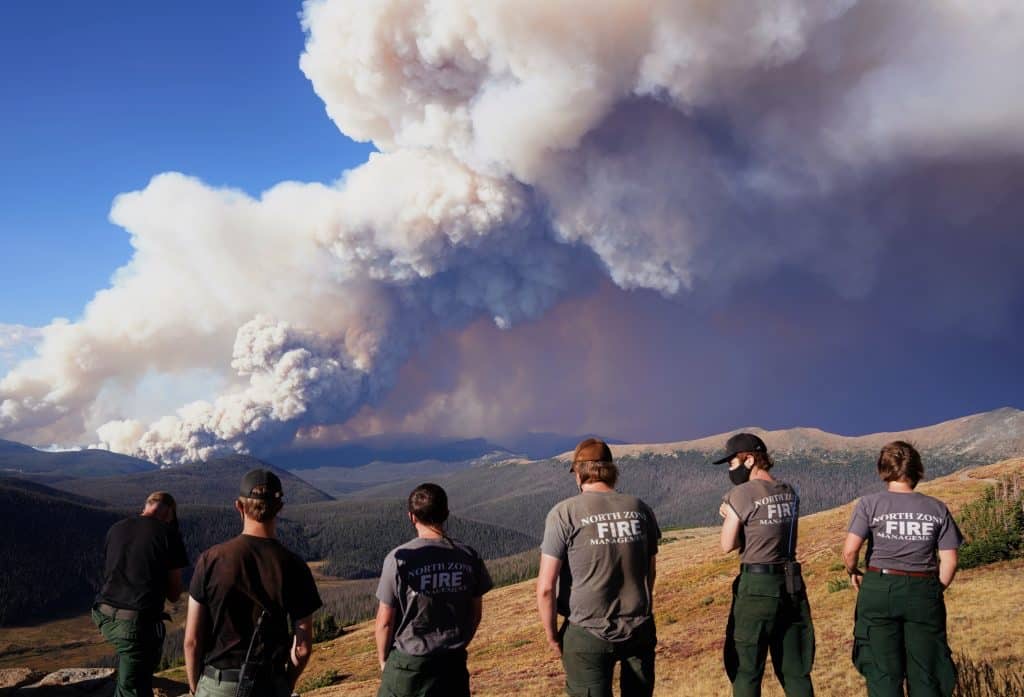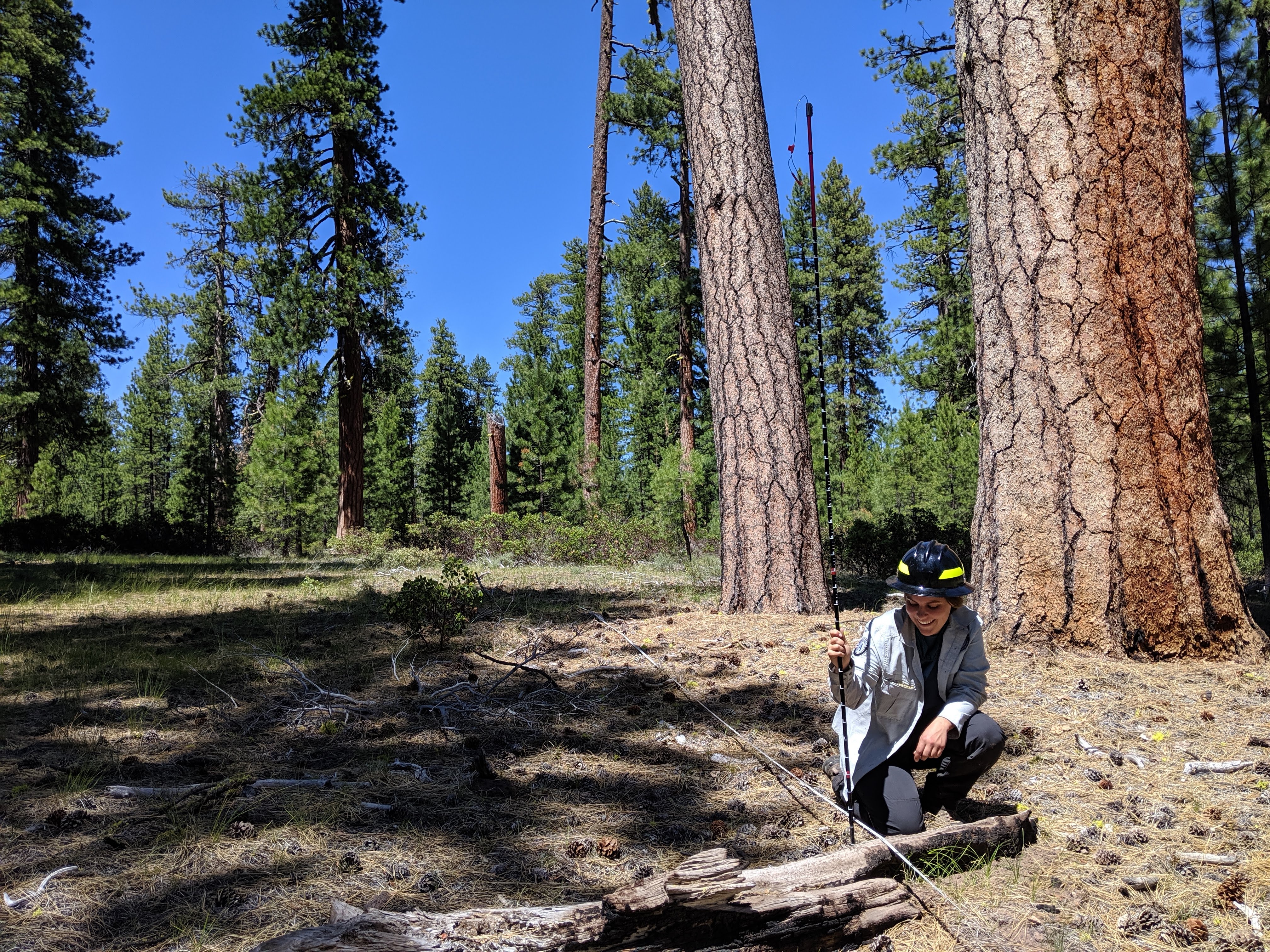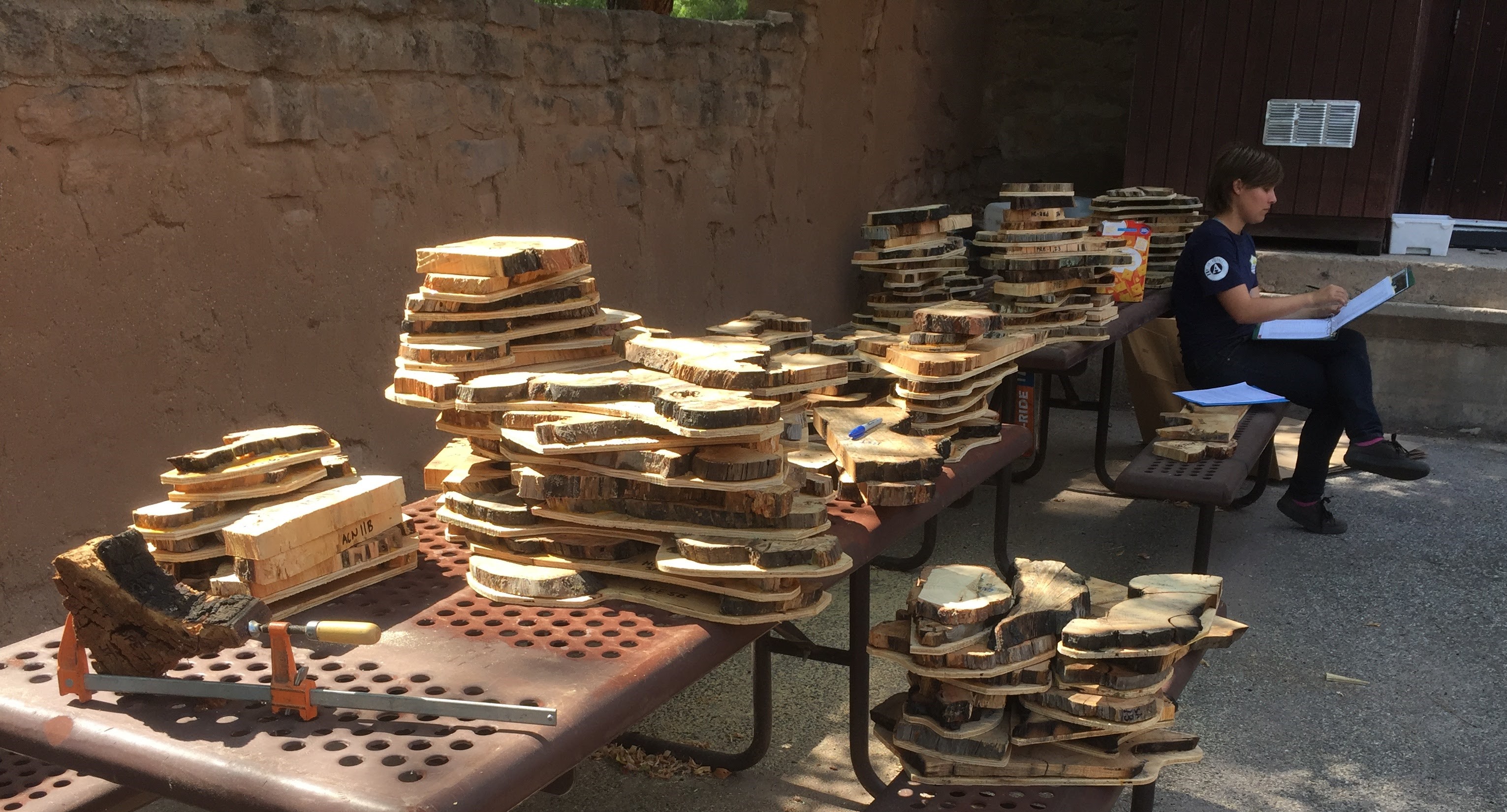Research Interests
| Fire Ecology | Dendrochronology | Forest Regeneration |
|---|---|---|
 |  |  |
Current Research
Fire Ecologist
Shenandoah National Park, Luray, VA
In 2025 I became the South Zone Fire Ecologist for the Northeast Region of the National Park Service.
Past Research
Assistant Lead Fire Effects Monitor
Grand Canyon National Park, North Rim, AZ
In the winter of 2023 I joined Grand Canyon Fire Effects crew as an Assistant Lead and permanent employee. The Fire Effects crew collects field data to discover ecological patters of forest recovery following fire, and my roles were to lead data collection, analyze data, and manage our research program.
Contributing Reports: 2023 Grand Canyon Fire Effects Annual Report; 2024 Grand Canyon Fire Effects Annual Report
Lead Biological Science Technician
USGS Western Ecological Research Center, Sequoia-Kings Canyon National Parks, Three Rivers, CA
In the summer of 2023 I worked with the USGS in Sequoia-Kings Canyon National Parks. As a crew lead, I brought researchers into backcountry field sites to collect fuel data in recently burned and unburned Sequoia groves. This data looked at forest regeneration and seedling abundance, to see how these landscapes are recovering from recent fires.
Master of Science in Natural Resources Studies
School of Natural Resources and the Environment, University of Arizona, Tucson, AZ
I graduated in December of 2022 as an M.S. in Natural Resources Studies, with an emphasis in Fire Ecology. I tested the tolerance of five tree species from southwestern montane environments to both droughts and heatwaves. I found strong species differences in drought tolerance among juvenile trees. Lower elevation species that grow in warmer ambient conditions died earlier (e.g. ponderosa pine in 10 weeks) than did higher elevation species from cooler ambient conditions (e.g. limber pine in 30 weeks). I also found that heatwave exposure had a minor effect on tree mortality, although was most pronounced among higher elevation species (e.g. limber pine died 2.7 weeks earlier). This study suggests that droughts will play a leading role in juvenile tree mortality and will most directly impact species at warmer climate thresholds.
Original Research: UA Publication
Fire Effects Monitor
Grand Canyon National Park, North Rim, AZ
I first joined the Fire Effects Monitoring crew at Grand Canyon National Park in 2020. The Fire Effects (FX) crew is responsible for monitoring vegetation change following prescribed burns and wildfires using long-term ecological plots. We collect forest data such as plot photos, tree growth, shrub abundance, plant species composition, fuel loading, and seedling counts. We also serve as wildland firefighters, with a particular focus on monitoring fire activity during prescribed burns. In 2021 I joined the FX crew as an Assistant Lead Monitor and took on responsibilities with program management, organizing field work, and data analysis. The depth of fire-related ecological data that this program maintains inspired me to return to graduate school to learn about fire ecology research.
Contributing Reports: 2020 Grand Canyon Fire Effects Annual Report; 2021 Grand Canyon Fire Effects Annual Report
Dendrochronology and Fire Effects Intern
North Cascades National Park, Marblemount, WA
As a Scientist-in-Parks intern, I curated tree ring samples for a fire history study using dendrochronology. I also worked with the Fire Effects Monitoring crew, responsible for collecting forest vegetation data to monitor the effectiveness of prescribed fire treatments. During this time I became a qualified Wildland Firefighter and assisted in prescribed burn operations. I also worked with communication center radio dispatching and Search and Rescue operations within the park.
Contributing Reports: 2019 North Cascades Fire Effects Annual Report; Karen Kopper Dissertation
Luquillo Long-Term Ecological Research Intern
El Verde Field Station, El Yunque National Forest, Río Grande, PR
During the winter of 2018, I joined the El Verde Field Station in Puerto Rico to study forest dynamics post-hurricane María. We worked on a variety of forestry projects, including canopy and plot photos, soil and litter processing, vegetation surveys, and coarse woody debris measurements.
Dendrochronology Research Intern
USGS New Mexico Landscapes Field Station, Bandelier National Monument, Los Alamos, NM
I spent a year researching with the Dendroecology Lab at the New Mexico Landscapes Field Station, a USGS research team working in collaboration with Bandelier National Monument. Here I studied fire history in the Jemez and Sangre de Cristo Mountains using dendrochronology techniques. Through this position I learned to identify fire scarred trees in the field, take samples of tree cores, and cross date tree rings to determine fire years. I also assisted with ecological monitoring projects at Bandelier National Monument, including demography plots, dendroband measurements, vegetation transects, and fire effects forest plots.
Contributing Reports: USGS Santa Fe Fire History
Bachelor of Science in Environmental Sciences
College of Natural Resources, University of California, Berkeley, CA
My senior thesis at UC Berkeley focused on grazing effects on plant diversity at Point Reyes National Seashore using multiple spatial scales. At a fine-scale, I looked at species diversity of forbs and grasses in both grazed and ungrazed portions of the land, at either side of fenced grazing allotments. At a broad-scale, I analyzed changes in shrubland and grassland using GIS vegetation classification maps from aerial images taken in the 1940s, 1960s, and 1990s. Overall, I found that grazing did not alter species diversity significantly, but there had been a large-scale shift from grassland to shrubland over time, which may have corresponded with shifting land ownership in the region.
Original Research: UC Berkeley Thesis; UC Berkeley Thesis Poster

